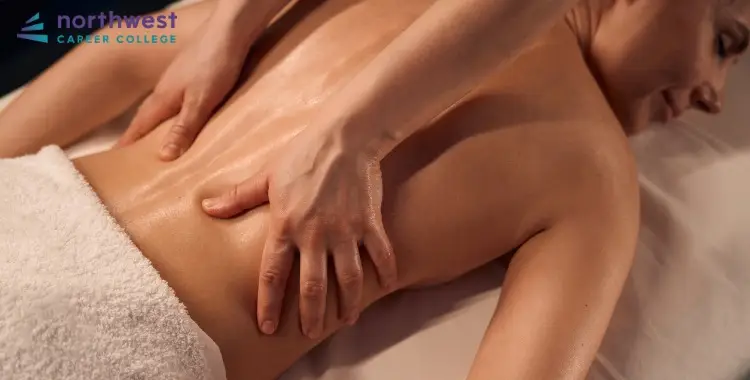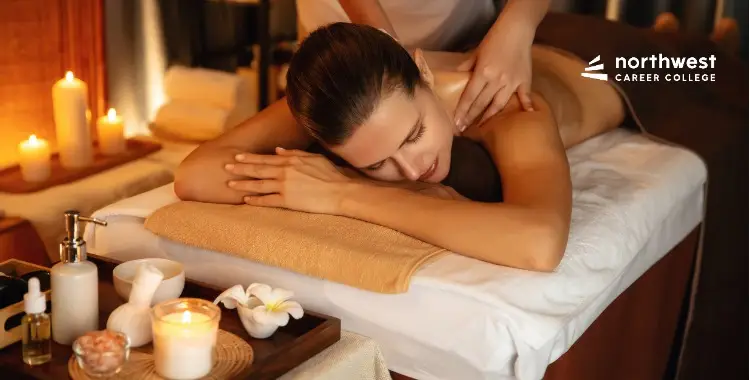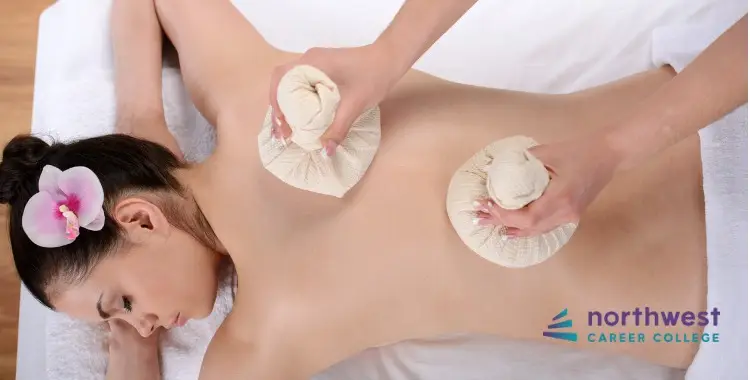What to Expect During Your First Massage Therapy Session
- Massage Therapy
- November 8, 2024
- 1.5k views
- 4 min read

If you are thinking about becoming a massage therapist, you should know precisely what happens during a massage therapy session. Knowledge of the process helps you prepare for your role as a therapist and builds confidence when dealing with clients. Massage therapy is among the services that are in demand today.
An indicator of massage therapy’s popularity may be that, according to the National Holistic Institute estimate, about 47.5 million adult Americans reported considering massage therapy in 2018. Let’s describe what you might expect during your first massage therapy session, this will help you feel more prepared and relaxed as you enter this new experience.
Table of Contents
Reception and Initial Consultation
Upon arrival, you will greet the client and conduct a short consultation to familiarize yourself with their needs and concerns. You will then ask your client several questions about their health, painful and tense areas, and what they expect from the massage.
Meanwhile, during this discussion, the incentive is to listen keenly and jot down notes to pattern the session according to their needs. This is the time to ask if they have any medical history or injury you need to know before initiating the massage.
Preparation of Client for the Massage
By the end of the consultation, your client is ready to prepare for the massage. You’ll take them into the massage room and tell them how to prepare. Most clients will undress comfortably, usually down to underwear or completely undressed, and then lie on the massage table.
You will provide fresh sheets and towels to cover them during the session. It should always be explained to the client early in the session that they will always be covered. Only the massaged area will be uncovered; you will always check with them to ensure they are comfortable.
Initiating the Massage
Usually, this begins with light pressure intended to warm the muscles and relax the client. Depending on the type of massage you want, you may proceed with long strokes, kneading, or even circular movements on specific body areas.
Some areas you might focus on include:
- Back and shoulders to relieve tension.
- The legs and feet can help to relax these muscles.
- Neck and head for stress relief.
Communicating with a client throughout the session is essential. Ask them about the pressure they feel. Do they want more or less? Some people like to apply very light pressure, while others prefer deeper pressure.
Common Massage Techniques
As a massage therapist, you could use several techniques depending on the client’s needs. Here are some of the standard massage techniques you might use during a session:
Swedish Massage: A prevalent form of massage that involves long, flowing strokes with light pressure. Certainly one of the most relaxing kinds of massage.
Deep Tissue Massage: This method applies deeper, firmer pressure to ensure that more profound layers of muscles and tissues are targeted to help clients with chronic pain or muscle tension.
Trigger Point Therapy: As the name suggests, this exercise pinpoints specific muscle points. Applying pressure to these points helps relieve tension.
This will allow us to tailor each session to the client’s preferences and health conditions, as different techniques will be learned.
After the Massage: Feedback and AfterCare
When the massage is complete, you will leave the room so they may dress. Once they are ready, you may speak with them about their feelings and any feedback due to the session. If you notice any areas of tension, you can suggest stretches or other ways to relieve muscle soreness at home.
They must also remind the client to drink plenty of water after the massage. This is so that toxins that may have been released from the massage can be flushed out. You can also ask if they would like to schedule another appointment in the future, especially if they found it helpful.
Conclusion
Your initial massage therapy session welcomes the client aboard, does a consultation just like any therapist-to-be would, prepares the massage room, and proceeds to various modalities to make the person feel relaxed and dispel tension. Communication is paramount during all this time so that the client feels comfortable throughout the entire session.
Want to pursue a career as a massage therapist and learn what it takes to succeed? Visit Northwest Career College today and speak with us about our Massage Therapy Programs. We offer the best education available anywhere, assuring your eventual success in this rewarding profession!





